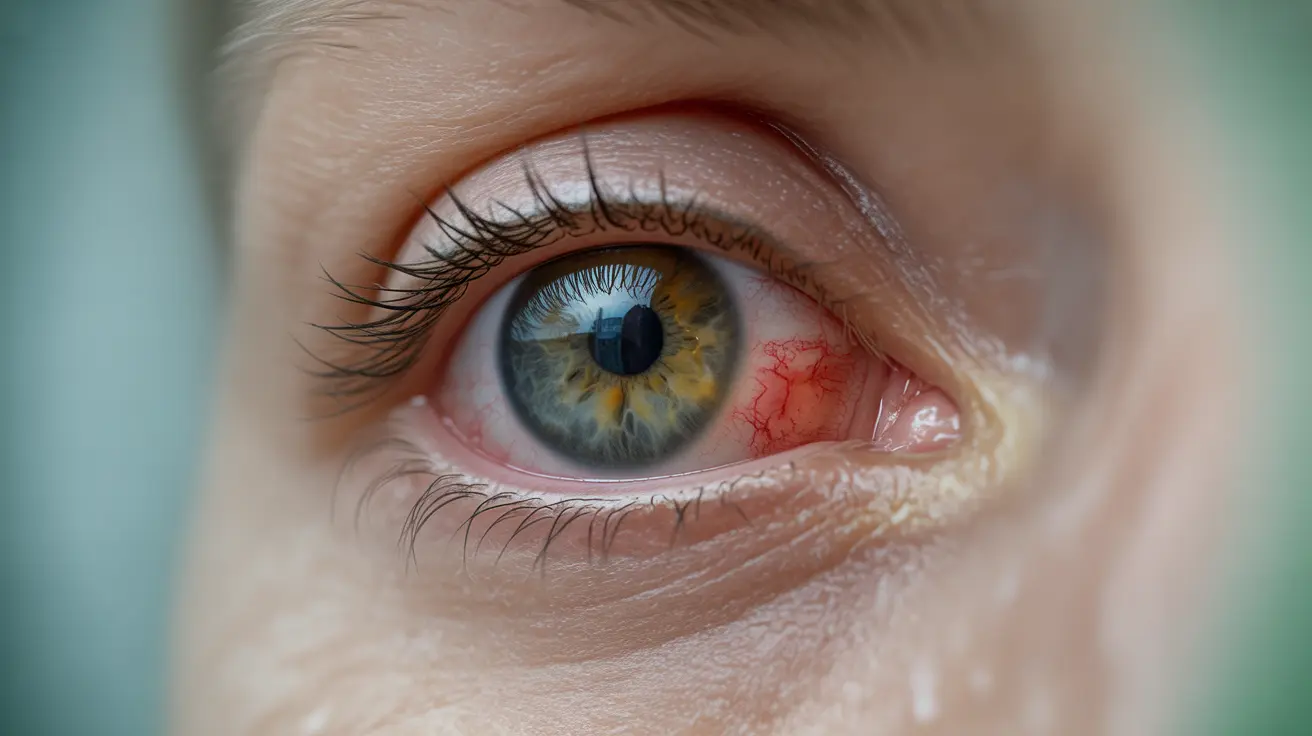If you're experiencing eye pain and wondering if dry eye syndrome could be the culprit, you're not alone. The relationship between dry eye and eye pain is complex, and understanding this connection is crucial for finding effective relief. While dry eye syndrome can indeed cause varying levels of discomfort and pain, it's important to know when these symptoms might indicate a more serious condition requiring medical attention.
Let's explore the connection between dry eye and eye pain, including causes, treatments, and when to seek professional help. Understanding these aspects will help you make informed decisions about your eye health and find the most appropriate solutions for your symptoms.
Understanding Dry Eye and Pain Symptoms
Dry eye syndrome can manifest various types of discomfort, ranging from mild irritation to significant pain. Common sensations include:
- Burning or stinging
- Sharp, stabbing pain
- Gritty or foreign body sensation
- Pressure or aching behind the eyes
- Sensitivity to light
The severity of pain can vary significantly among individuals and may worsen throughout the day, especially during activities that require prolonged visual focus, such as reading or computer work.
Common Causes of Dry Eye Pain
Environmental Factors
Several environmental conditions can trigger or worsen dry eye pain:
- Extended screen time
- Low humidity environments
- Air conditioning or heating
- Windy conditions
- Smoke exposure
Medical Conditions
Underlying medical conditions that may contribute to dry eye pain include:
- Autoimmune disorders
- Hormonal changes
- Meibomian gland dysfunction
- Blepharitis
- Medication side effects
Treatment Options Beyond Over-the-Counter Solutions
Prescription Medications
When over-the-counter treatments prove insufficient, your eye care provider might recommend:
- Prescription anti-inflammatory drops
- Cyclosporine or lifitegrast drops
- Steroid eye drops for short-term use
- Autologous serum tears
Advanced Treatments
More severe cases may benefit from specialized treatments such as:
- Punctal plugs
- LipiFlow thermal pulsation
- Intense pulsed light therapy
- Amniotic membrane treatment
Prevention and Lifestyle Modifications
Implementing certain lifestyle changes can help reduce dry eye symptoms and associated pain:
- Taking regular screen breaks using the 20-20-20 rule
- Maintaining proper hydration
- Using a humidifier in dry environments
- Protecting eyes from wind and sun
- Following a healthy diet rich in omega-3 fatty acids
When to Seek Medical Attention
Certain symptoms warrant immediate medical evaluation:
- Severe or persistent eye pain
- Sudden changes in vision
- Light sensitivity with headache
- Redness accompanied by discharge
- Pain that doesn't respond to over-the-counter treatments
Frequently Asked Questions
- Can dry eye syndrome cause sharp or severe eye pain, and what are the underlying causes?
Yes, dry eye syndrome can cause sharp or severe eye pain. The main causes include insufficient tear production, increased tear evaporation, or poor tear quality. Underlying conditions like autoimmune disorders, hormonal changes, and environmental factors can contribute to these symptoms.
- What are the most effective treatments for chronic dry eye that do not respond to over-the-counter remedies?
Effective treatments for resistant chronic dry eye include prescription medications like cyclosporine or lifitegrast, punctal plugs, thermal pulsation therapy, and intense pulsed light treatment. Your eye care provider can determine the most appropriate option based on your specific condition.
- How can I determine if my eye pain is due to dry eye or another underlying condition that needs medical attention?
While dry eye typically causes burning, stinging, or gritty sensations that worsen throughout the day, severe, sudden, or persistent pain accompanied by vision changes or discharge likely indicates another condition requiring immediate medical evaluation.
- Are there any preventive measures or lifestyle changes that can help reduce the risk of developing dry eye syndrome?
Yes, preventive measures include taking regular screen breaks, maintaining good eye hygiene, using a humidifier, protecting eyes from wind and sun, staying hydrated, and consuming omega-3 rich foods. These lifestyle modifications can significantly reduce dry eye risk.
- What are the differences between artificial tears and prescription eye drops, and when should I consider using each for dry eye treatment?
Artificial tears provide temporary relief by lubricating the eye's surface, while prescription drops target underlying inflammation or increase tear production. Consider prescription drops when artificial tears provide insufficient relief or require frequent application (more than 4 times daily).




